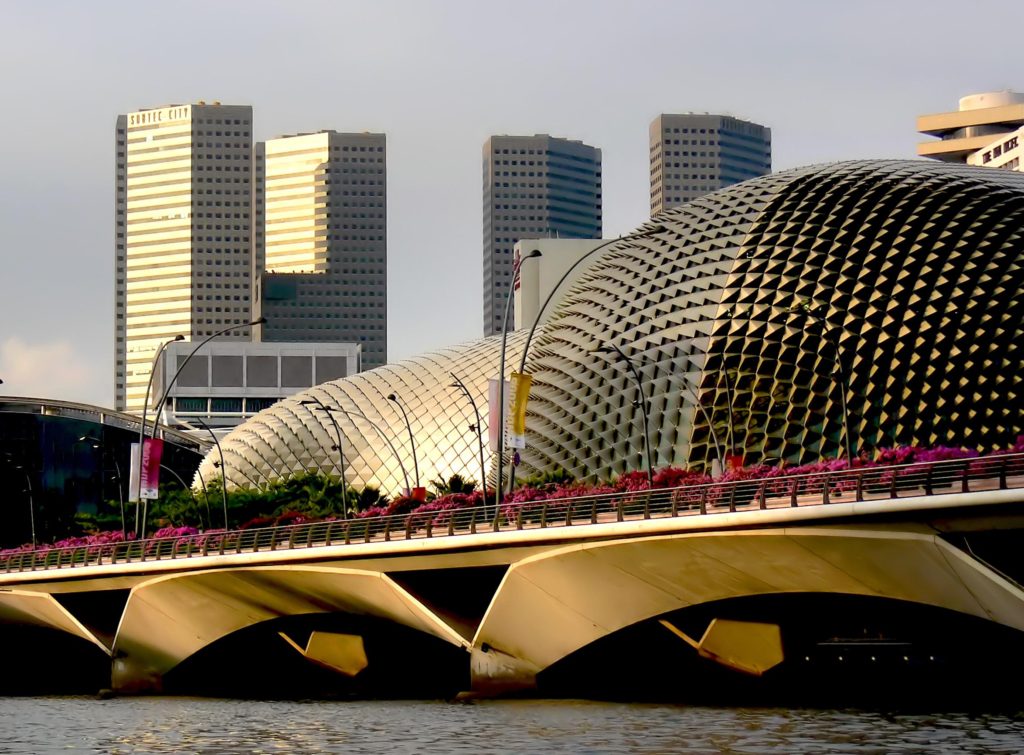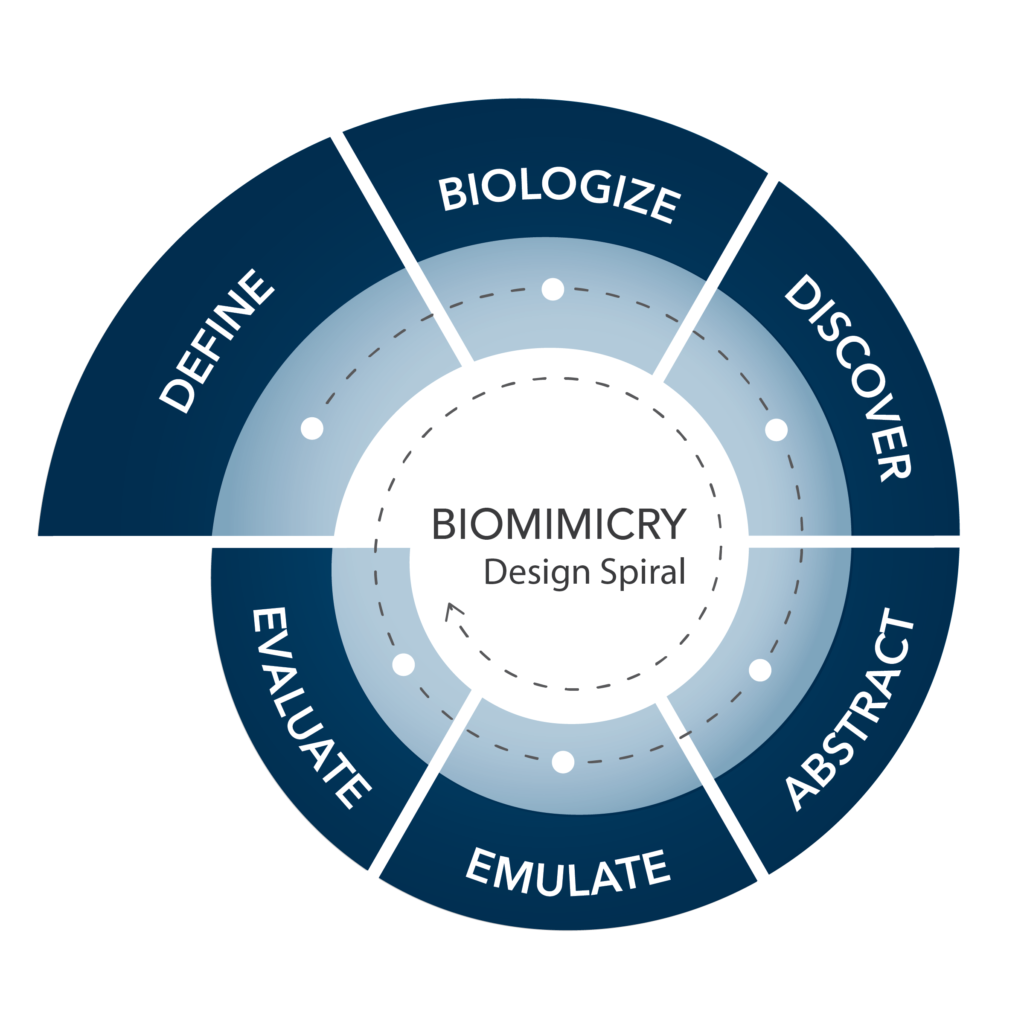We are back with another architecture-style series, and we didn’t forget about the runner-up from our previous Instagram poll! Today’s article will be discussing the history, defining qualities of the unique style of biomimicry, and highlight some projects! So what the heck is biomimetic architecture? The term “biomimetic” was coined by American biophysicist and inventor Otto Schmitt in the 1950s. However, let’s be clear that biomimetic and biomimicry can be used interchangeably, with slight differences depending on the context. Biomimetics or biomimicry emulates nature’s models, systems, and elements to solve complex human programs.
We want to note that biomimetic architecture is a relatively new field with loosely defined borders. Still, broadly speaking, two approaches are the simulation of biological processes and the co-option of living material, called bio-utilization. We will be sharing two projects that highlight each approach.
The Origin
Biomimicry didn’t just start in the 1800s or 1900s; humanity had always taken inspiration from nature! It’s not surprising if you take a step back and realize that the Earth had been developing and refining the methods of life for 3.8 billion years! The earliest example of biomimicry is silk in fabrics around 3000 BCE, then pyramids, representative of mountains, in 2470 BCE, even to the first Chinese umbrellas taking inspiration from a lotus leaf! However, fast forward a little bit, Leonardo Da Vinci is a critical and easily recognized biomimicry student. The renaissance man himself, an expert scientist, inventor, artist, architect, mathematician, and many more, was ahead of his time. Da Vinci takes numerous inspirations from nature, like his fascination with birds and the flight of man, but the most notable to the world of design is the discovery of the divine proportion.


Fast forward again, in 1941, Swiss engineer George de Mestral invented his first touch fastener after realizing why and how burdock seeds kept sticking to his socks, coat, and dog after their walks in the alps. What does that have to do with biomimicry? He realized he could replicate this natural occurrence into something useful, and he was exactly right! His creation eventually led to Velcro, which is a global fastener that is spotted and heard instantaneously. You know what distinct sound I’m talking about! Now, De Mestral’s concept of taking inspiration, imitating, and replication the behavior of biological organisms was later popularized by Janine Benyus in her book, Biomimicry – Innovation Inspired by Nature(1997).
Benyus introduced three aspects that relate creation and human innovation with nature that set the atmosphere of modern biomimicry and biomimetic architecture.
- Nature as Model
- Biomimicry is a new science that studies nature’s models and then emulates these forms, processes, systems, and strategies to solve human problems – sustainably.
- Nature as Measure
- Biomimicry uses an ecological standard to judge the sustainability of our innovations. After 3.8 billion years of evolution, nature has learned what works and what lasts.
- Nature as Mentor
- Biomimicry is a new way of view and valuing nature.
Bio-Inspired Structures
From the late 19th century to the beginning of the 20th century, you can find a stunning and influential structural form deriving from natural biological occurrences in the work of Antonio Gaudi. A prime example is La Sagrada Familia using tree canopy shapes combined with his hanging chains, structural models. The phenomenon of utilizing the tree-form for structure is no stranger to modern-day architectural design. However, with more technological advancements, we can push the bounds further with bio-inspired forms.
The proposed Chicago Spire designed by Calatrava – the would be 2nd tallest structure in the world – is a timeless design that took inspiration from nature’s spiral arrangement of the nautilus that would’ve pushed biomimetic design to another level! The building’s form incorporates the golden mean and the Fibonacci sequence to mirror the nautilus shell’s spiraling growth closely. The helical structure made it possible for the Spire to be slender and tall, featuring 150 floors and 1,194 residences giving each occupant a different view of Chicago! Unfortunately, Calatrava’s project didn’t proceed further, but this experimental design proved infinite possibilities for designers.
Responsive Façade
One of the key elements of architecture is how to dress the building, and with biomimetic design, facades will typically hold multiple functions other than just protecting the interior space. It is essential to understand that sustainable design is an integral facet of biomimicry to mitigate humans’ impact on the world.
The Gherkin designed by Norman Foster is an excellent example of a multi-functioning responsive façade! Foster took inspiration from the Venus flower basket sponge, which led to a cylindrical form with spiraling windows and light wells. The design resulted in a 40% reduction in energy costs per year!
Below is another excellent example of responsive façade designing.


Esplanade Theatre by DP Architects
Durian, a tropical fruit, is widely known and used in Singapore as a source of income and nutrition for the local people, but beware, this fruit can have a kick that many people can’t take! This fruit is a thorn-covered husk to keep the seeds safe from heat, and DP Architects was inspired by that function and incorporated it into the façade design. The skin of the building has three main benefits: it adjusts to the environment by letting sunlight in, protects the interiors from overheating, and gives people an opportunity to admire the outside view. I mean, just look at the image below!

After careful study of the solar path at this location, DP Architects chose external fins with a varying range of geometry and angles in response to the solar path to solve a significant design problem for a building near the equator! We have mushroom architecture and durian-inspired architecture; what’s next?
Utilization of Bio-Materials
Our previous article, Is Mushroom Architecture The Next Thing, was a teaser to the idea of bio-materials in architecture design, which kind of hits the nail on the head of biomimicry. As well as replicating biological processes or gaining inspiration, a subset of sustainable and biomimetic design is the desire to reach a net-zero or net-positive building! With the utilization of bio-materials, it’s not far-fetched at all, though I can’t expect a large-scale net-zero bio-building just yet, but, I could be wrong. The strained global society with rising natural disasters due to global warming could push scientists, engineers, designers, etc., to exponentially accelerate the capabilities of building materials and processes.
There are many bio-materials, and we discussed mycelium bricks before, but let’s talk about bioMASON. A company aiming to reduce carbon emission in masonry manufacturing grows brick in its factory with kiln-free, greenhouse-like conditions. CEO Ginger Kreig Dosier says, “What we’re creating is a biological cement,” slightly different from mycelium bricks, but it has a similar bonding process. bioMASON uses bacteria that alter the pH balance of the surrounding aggregate material, allowing calcium carbonate to grow and bind the material together with little to no carbon emissions. We can go as far as calling a piece of architecture a living organism if this trend continues with bio-materials.
The BIQ House, aka "Algae House" by Arup
The BIQ House in Hamburg, Germany, was designed by international firm Arup with Germany’s SSC, Strategic Science Consultants, and Austria-based Splitterwerk Architects, which launched as part of Hamburg’s international building exhibition in 2013.
It’s the world’s first example of a “bioreactor façade” where the algae, a biomass, produces heat and is stored for the residents’ use, but it doesn’t stop there! The algae also act as a thermal massing, and they can either propagate or diminish based on exposure to sunlight, keeping the building at a comfortable temperature without touching the air conditioning unit! The integration of natural occurrences supported by technology and advanced materials in this innovative and sustainable design solution screams biomimicry!
The Biomimicry Design Spiral
Biomimicry is multidisciplinary, and it’s here to stay. This “biomimetic revolution” is now considered an important guideline towards sustainable built environments focusing on pulling innovation from nature rather than extracting elements from it.
Following the Biomimicry Design Spiral can be extremely helpful when setting out to solve human problems with biomimicry. It has six critical steps a designer should follow for biomimetic solutions, and with any design, it’s not a clear path but a guideline.

Below, we have shared the description for each design process that Biomimicry Toolbox shares on their platform.
Clearly articulate the impact you want your design to have in the world (i.e., the challenge you want to solve) and the criteria and constraints that will determine success.
Analyze the essential functions and context your design solution must address. Reframe them in biological terms, so that you can “ask nature” for advice.
Look for natural models (organisms and ecosystems) that need to address the same functions and context as your design solution. Identify the strategies used that support their survival and success.
Carefully study the essential features or mechanisms that make the biological strategies successful. Restate them in non-biological terms, as “design strategies.”
Look for patterns and relationships among the strategies you found and hone in on the key lessons that should inform your solution. Develop design concepts based on these elements.
Assess the design concept(s) for how well they meet the criteria and constraints of the design challenge and fit into the Earth’s systems. Consider technical and business model feasibility. Refine and revisit previous steps as needed to produce a viable solution.
Although I’m no expert, I hope today’s article provided some insight on biomimicry and biomimetic design! Well, that’s all we have for you today, and if you’ve made it this far, you deserve a cookie. I hope you found this article interesting and took something from it! Sharing is caring! We hope to provide you with valuable insights and share them with someone who might find this helpful. Make sure to follow our Youtube and Instagram for more content!
